Deadlifts: Unlocking Their Benefits for a Pain-Free Life
Written on
Understanding the Deadlift: Myths and Realities
Are deadlifts harmful to your back? This is a question that has been widely debated, especially among fitness enthusiasts and health professionals. Similar to squats, deadlifts have garnered significant criticism due to concerns about their safety. I have frequently heard from doctors and chiropractors that I should steer clear of deadlifting due to various injuries. Back then, I accepted this advice without question and made it a point to avoid any form of spinal rounding, believing it was the key to quick recovery and preventing flare-ups.
Reflecting on this now, as a trainer and kinesiologist, I recognize that such health advice can often do more harm than good. In my profession, I encounter a pervasive fear of bending the back, which is heavily influenced by messages from health practitioners. The negative perception of spinal flexion during deadlifts has heightened pain experiences, largely due to fear. I have worked with numerous patients suffering from back and hip pain, many of whom feel immobilized because they’ve been led to believe that movement equates to injury. This is truly disheartening.
Let’s clarify this once and for all: deadlifts are not only safe, but they are also a crucial movement pattern for daily activities. Whether you're lifting your child or carrying groceries, avoiding deadlifts is nearly impossible in some form. Given this reality, wouldn’t it be wise to train this pattern and build your body's resilience for a more functional, pain-free lifestyle?
If you have reservations about deadlifting and are battling pain or stiffness, don’t worry—there is hope. In the following sections, I'll share practical tips to help liberate your tight body and anxious mind.
The Journey from Fear to Fitness: Embracing Deadlifts
The secret to successful deadlifting lies in understanding that there’s a suitable variation for everyone. While you may not be ready to lift 500 lbs, it doesn’t mean you can’t safely practice a modified version of this essential movement. If you have severe back or hip injuries, or chronic conditions that pose risks during physical activity, please consult a knowledgeable health provider who understands that movement is therapeutic before attempting the following guidelines.
My best recommendation is to take a gradual approach, starting with foundational movements. I often teach fundamental patterns such as the hip hinge and glute extension to individuals suffering from chronic pain. Through a methodical exposure strategy, patients can quickly enhance their strength, function, and most importantly, their confidence in their physical capabilities. This leads to numerous health advantages, including but not limited to:
- Enhancing the safety and effectiveness of everyday movements
- Developing a more resilient and adaptable core
- Preventing future spine-related injuries
- Increasing your active range of motion, especially under load
- Eliminating the fear of spinal flexion to alleviate pain and enhance performance
Have you been told that rounding your back is dangerous? This is a common misconception—provided you operate within your current mobility, strength, and load tolerance while progressing wisely over time. — Dr. Caleb Burgess
Let’s now review a progressive plan that you can follow to incorporate deadlifts into your routine safely. Remember, patience is key! As you advance through each exercise, listen to your body and never push through discomfort. Progress may not always be linear, but the consistent effort you invest will lead to transformative outcomes over time. You’ve got this!
Step 1: Supine Pelvic Tilt
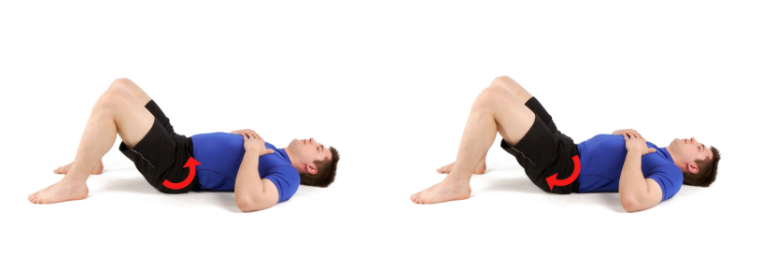
Application: 10–15 repetitions
Instructions: Lie on your back with your knees bent. Gently engage your core as if bracing for a punch. Alternate between tucking your tailbone and squeezing your glutes, then allowing your hips to rotate forward. Maintain core tension and keep your breathing steady. Aim to maximize your range of motion, holding each position at the end of its range for 1–2 seconds.
Step 2: Hip Hinge

Application: 10–15 repetitions
Instructions: Use a stick or dowel for this exercise. Place it behind your back as shown in the image. Tilt your pelvis backward (before bending your knees) and lower your chest toward the floor. The dowel will help you focus on using your hips and lower body while keeping your spine extended. If this is challenging, try hinging back against a wall until your pelvis touches it. Additional practice opportunities include sitting up and down from a chair or performing stretches like toe touches.
Step 3: Toe Touch Squat-to-Stand
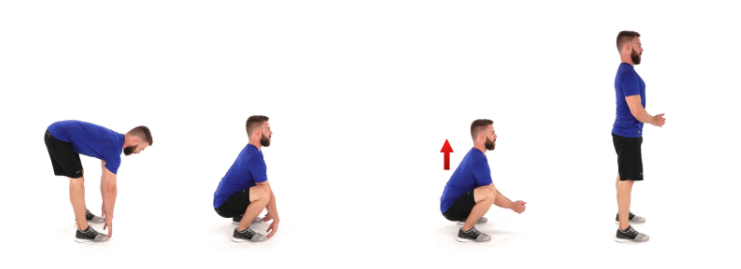
Application: 10–15 repetitions
Instructions: Start by hinging at the hips and lowering your arms towards the floor. Don’t stress if you can’t touch your toes—just do your best. Next, drop into a squat by bending your knees and lowering your hips while lifting your chest. Pause at the bottom for 1–2 seconds before rising back to a standing position.
Step 4: Jefferson Curl with Stick or Kettlebell
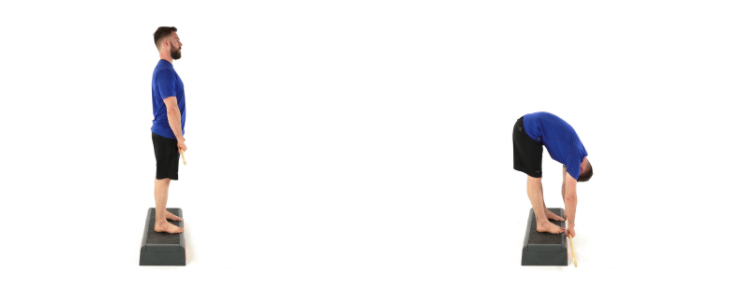
Application: 10–15 repetitions
Instructions: Stand on a step holding a stick or kettlebell. Round your spine and roll down one vertebra at a time, starting from your head and finishing in your lower back. Reverse the motion to roll back up, starting from your lower back and finishing at the head. Keep your knees straight throughout, and always stay within a pain-free range of motion.
Step 5: Overhead Squat
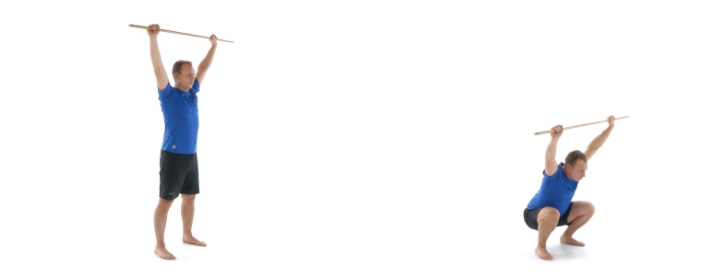
Application: 10–15 repetitions
Instructions: Hold a dowel overhead with your arms at a 90-degree angle to find your optimal hand placement, then extend your elbows to reach the starting position. Stand with your feet shoulder-width apart and squat down, keeping the dowel aligned over your toes. Aim to avoid letting it shift forward. As you squat, engage your core gently, ensure your knees track over your toes, and maintain an open chest.
Even if you cannot perform this movement perfectly, it is still incredibly beneficial for your mobility and strength. Focus on achieving a position that challenges your range of motion in a pain-free manner. With consistent practice, your mobility will improve.
Step 6: Loaded Deadlift (Putting It All Together!)
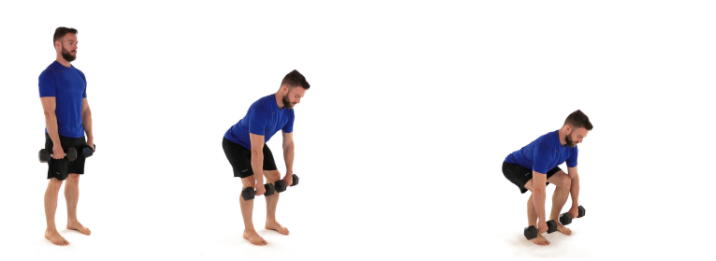
Application: 10–15 repetitions
Instructions: If you're recovering from an injury, start with a light weight and progress gradually. For beginners, I recommend using a kettlebell to maintain proper form. Begin by engaging your core to align your pelvis and ribs. Slowly hinge at the hips and lower the weights to knee height. Once you feel a stretch in your hamstrings, bend your knees until the weights reach the floor or just above. To return to the starting position, extend your glutes while exhaling. Maintain a neutral spine and neck throughout. If you need modifications, consider trying a Romanian deadlift or a single-leg deadlift.
In Conclusion
Deadlifts are not only safe but also a vital movement for our everyday lives. Contrary to what some health practitioners continue to promote, neglecting this exercise can hinder your rehabilitation and increase the risk of injury recurrence. It’s time to challenge this harmful narrative and embrace the power of movement as the best medicine for fostering strength and function in our lives!
This video discusses proper deadlifting techniques to prevent injuries and save your spine.
In this video, a chiropractor explains how to deadlift without experiencing back pain.